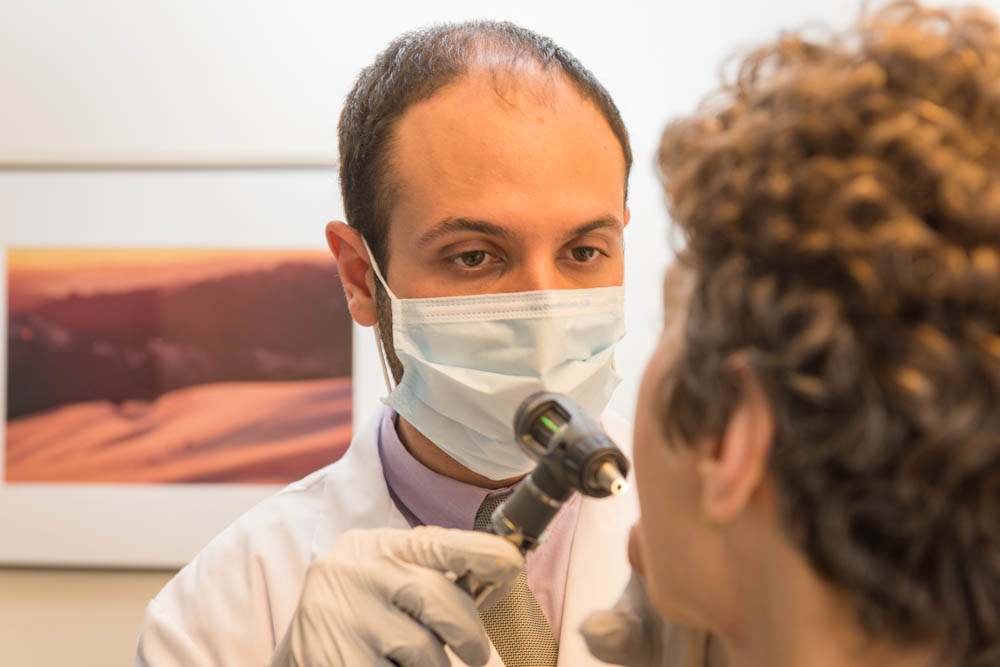Head and neck cancers represent a group of cancers that affect the throat, larynx, nose, sinuses, and mouth. While these diseases only represent 2.5 percent of new cancer cases in the U.S., they affect vital functions, including swallowing and speaking.
Here are five things to know about head and neck cancer:
1. What are the risk factors?
 Individuals who drink alcohol, particularly beer or hard liquor, and use cigarettes, cigars, pipes, or smokeless tobacco, are at a higher risk for developing head and neck cancer. Risk also increases with age, particularly those over 45.
Individuals who drink alcohol, particularly beer or hard liquor, and use cigarettes, cigars, pipes, or smokeless tobacco, are at a higher risk for developing head and neck cancer. Risk also increases with age, particularly those over 45.
Certain strains of the human papilloma virus (HPV), which can cause cervical and genital cancers, have also been shown to increase the risk of developing cancer in the head and neck region in both men and women.
2. What are the symptoms?
Symptoms for head and neck cancer include trouble swallowing; a persistent sore throat; cough; a change in voice; ear pain; and a lump in the mouth, neck, or throat. While these may be caused by other, non-cancerous conditions, check with your doctor if you exhibit any of these symptoms.
3. How is head and neck cancer diagnosed?
While head and neck cancer is most common in those older than 45, all adults should be screened annually as part of a dental exam that includes a full oral exam and inspection of the soft tissues of the head, neck, and interior of the mouth. Your physician can also complete this exam. If cancer is suspected, your doctor may order a CT scan, MRI, or PET scan to further investigate, or conduct a biopsy to test cells for cancer. This may include an endoscopy or laryngoscopy.
Read more:
4. How is head and neck cancer treated?
Treatment for head and neck cancer depends on its location and stage, but many patients receive a combination of surgery, radiation, and chemotherapy. Radiation and chemotherapy may affect your ability to speak or swallow, so it is important to discuss treatment options and how they may impact your life. Clinical trials are also an option for many patients, even those who have not yet begun treatment.
5. What are the side effects of head and neck cancer treatment?
Head and neck cancer occurs in a sensitive area and its treatment often affects important life functions like speaking and eating. Your treatment team may include speech pathologists, nutritionists, and pain management experts who can help you with these difficult side effects. Surgery may also affect your physical appearance, but new methods of robotic surgery and reconstruction are increasingly making it easier to treat head and neck cancers while sparing your appearance and ability to eat, swallow, and speak.
Learn more about the Head and Neck Cancer Treatment Center and the Oral Medicine and Dentistry Program at Dana-Farber/Brigham and Women’s Cancer Center.

Part of the treatment team should also include a dental professional. Head and neck radiation has a lasting affect on saliva flow which isprotective to tooth enamel. Saliva contains immunity and buffering ability to counteract what we eat and drink daily. Radiation to the head and neck has been proven to slow down the rate of saliva flow. A dentist can take impressions for fluoride trays that the patient can wear during treatment of cancer and use following for prevention of dental decay. Also, the dental staff should see these patients on a more regular interval of four times a year. We as a team can help these patients manage the discomfort that comes with dry mouth and continue to care for teeth with proper care and skill.